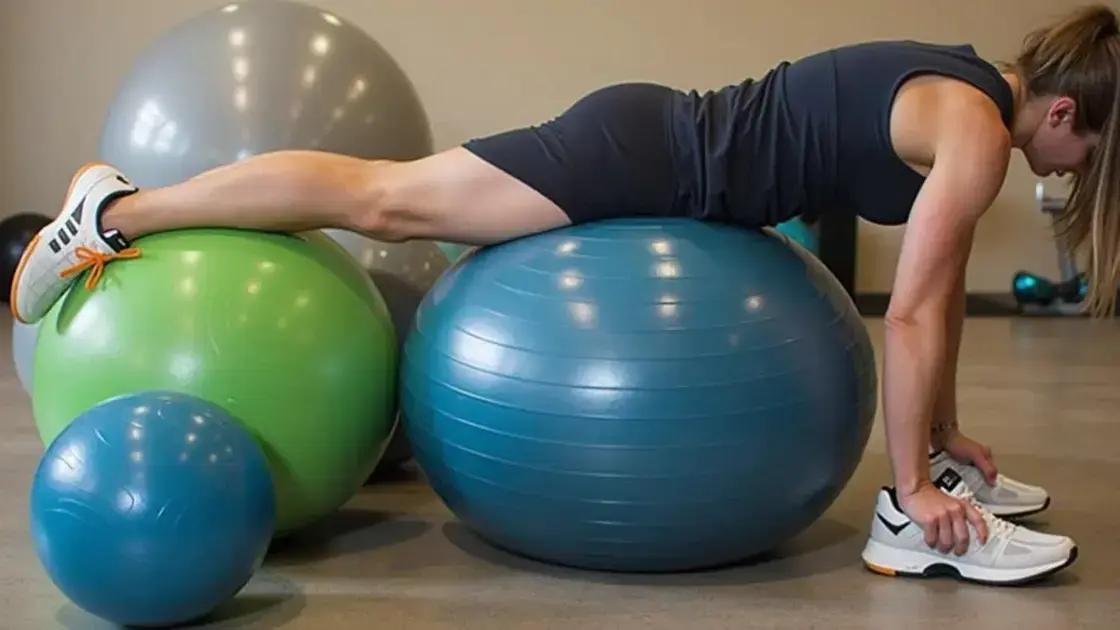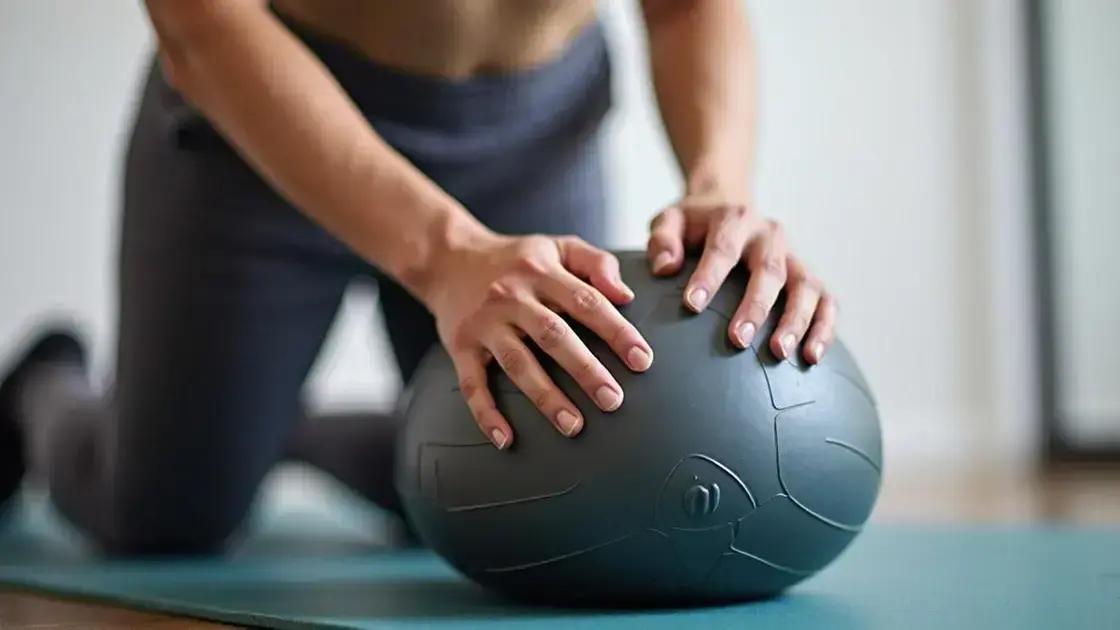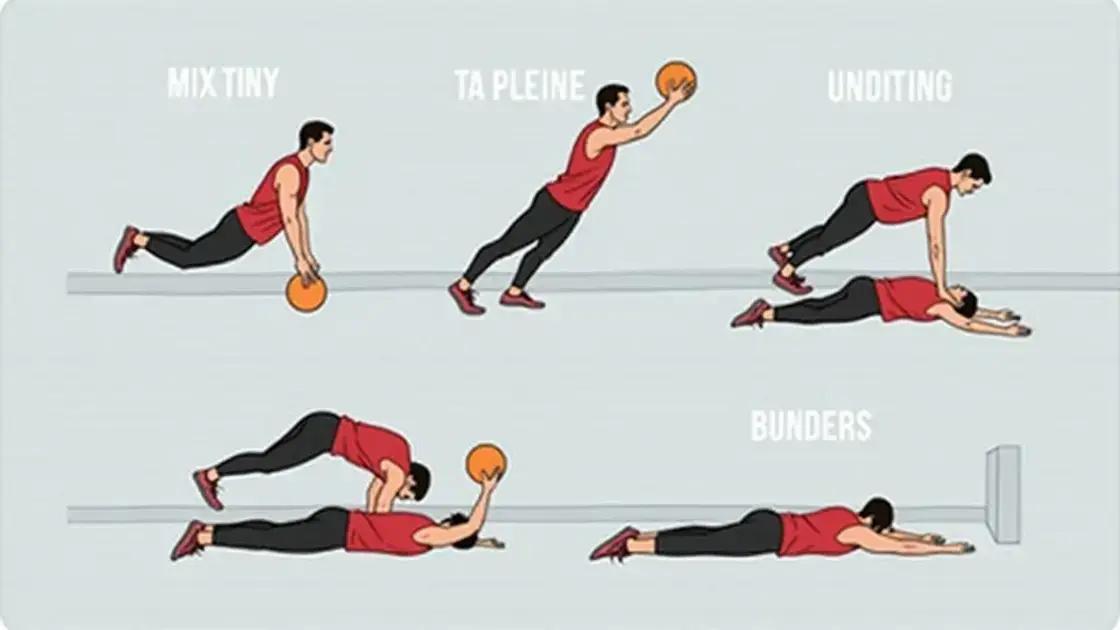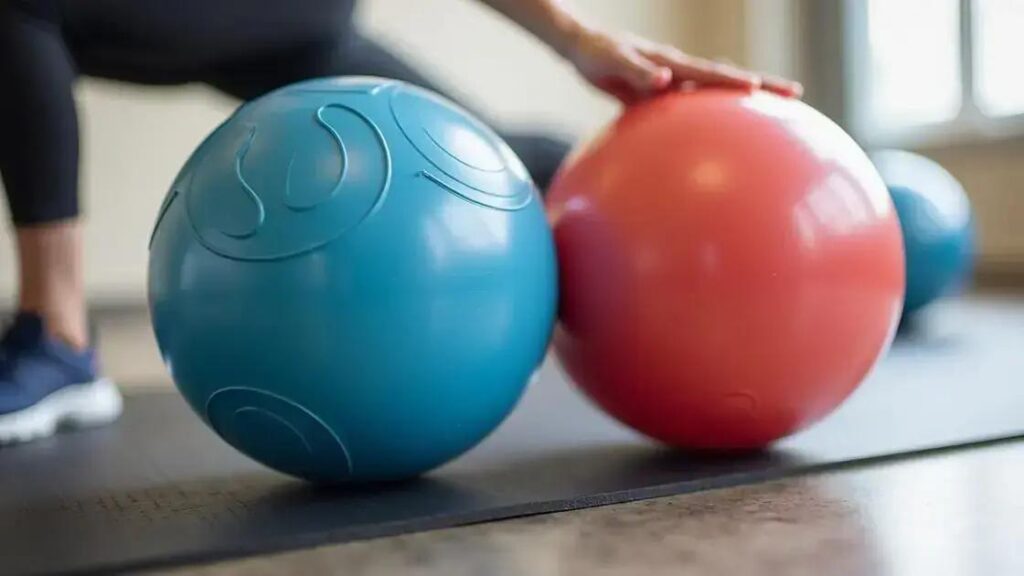Mobility balls play a crucial role in muscle recovery by relieving soreness, improving flexibility, and enhancing blood flow. Incorporating them into your routine consistently, along with proper hydration and nutrition, can significantly speed up recovery after workouts.
The role of mobility balls in muscle recovery cannot be underestimated. These tools help athletes and fitness enthusiasts address muscle soreness and improve flexibility after intense workouts. By applying pressure to specific muscle groups, mobility balls promote blood flow and aid in the healing process. In this article, we will delve into the benefits of mobility balls, share tips on incorporating them into your routine, and provide insights on optimizing your recovery.
Understanding Mobility Balls

Understanding Mobility Balls is crucial for anyone looking to enhance their muscle recovery process. These tools come in various sizes and densities, designed to provide targeted relief to sore muscles and fascia. Mobility balls function by applying pressure to muscle knots and trigger points, effectively helping to release muscle tension and improve range of motion.
What Are Mobility Balls?
Mobility balls are small, firm balls typically made of rubber or similar materials. They are used to perform self-myofascial release, which is a technique aimed at alleviating muscle tightness and enhancing flexibility. The versatility of these balls makes them suitable for various uses, such as therapy, rehabilitation, and typical workout recovery.
How Do Mobility Balls Work?
When you apply body weight onto a mobility ball and roll it across tight muscles, it creates pressure that can break up adhesions in muscle fibers. This process improves blood circulation, reducing soreness and promoting faster recovery. The objective is to find areas of tension and apply sustained pressure to help release these tight spots.
Types of Mobility Balls
There are multiple types of mobility balls available:
- Standard Mobility Balls: These are often solid and come in various densities, providing different levels of firmness.
- Massage Balls: Typically smaller, these balls can be used for more precise pressure applications in difficult-to-reach areas.
- Peanut Balls: Shaped like a peanut, these balls are designed for targeting muscles across the spine and larger muscle groups.
Overall, understanding mobility balls and how they function is essential to maximizing their benefits for muscle recovery.
Benefits of Using Mobility Balls

Using mobility balls offers numerous benefits for muscle recovery that can enhance your fitness routine. One of the main advantages is the ability to relieve muscle soreness. After intense workouts, soreness can limit your performance and motivation. Mobility balls help reduce tension and promote faster recovery, allowing you to get back to your training quicker.
Improves Flexibility
Regular use of mobility balls also improves flexibility. By targeting tight muscles and fascia, you can break up restrictions and increase your range of motion. This is crucial for athletes and anyone looking to improve their overall physical performance.
Enhances Blood Flow
Another significant benefit is enhanced blood flow. When you apply pressure to muscles with a mobility ball, you stimulate circulation. Increased blood flow can deliver oxygen and nutrients needed for healing, reducing recovery time after workouts.
Promotes Muscle Activation
Mobility balls can also promote muscle activation. Rolling over a muscle before exercising helps warm it up and prepare it for activity. This can lead to improved performance and reduced risk of injury.
Convenience and Portability
Lastly, the convenience and portability of mobility balls make them an excellent recovery tool. You can use them at home, at the gym, or even while traveling. Their small size makes them easy to carry, ensuring you always have access to a great recovery method.
How to Incorporate Mobility Balls in Your Routine

Incorporating mobility balls into your routine is straightforward and can significantly enhance your muscle recovery. Here are some effective ways to do it:
Schedule Regular Sessions
Set aside time for mobility ball sessions after your workouts. Aim for 10 to 15 minutes of rolling and pressure application on sore areas. This consistency will lead to better recovery and flexibility.
Target Key Muscle Groups
Focus on major muscle groups that are frequently used during your exercises. This includes the back, glutes, hamstrings, and calves. Spend extra time on any areas that feel particularly tense or sore.
Incorporate Dynamic Warm-ups
Use mobility balls as part of your warm-up routine. Spend a few minutes rolling on a ball before working out to warm your muscles. This can increase blood flow and prepare your muscles for movement.
Experiment with Techniques
Try different techniques while using the mobility balls, such as holding pressure on specific knots for 30 seconds to a minute. You can also gently roll over areas to distribute tension. Finding the right technique will provide the most relief.
Combine with Stretching
After using the mobility ball, follow up with some stretching exercises. This combination can enhance flexibility and ensure that the muscles are not only relaxed but also lengthened.
Listen to Your Body
Pay attention to how your body reacts. If you find any areas that are particularly painful or tight, spend more time addressing those spots. However, avoid rolling on injuries or areas that feel too sensitive.
Tips for Effective Muscle Recovery

To achieve effective muscle recovery, consider these helpful tips that can maximize the benefits of using mobility balls and enhance your overall recovery process.
Stay Hydrated
Drinking enough water is essential for muscle recovery. Hydration helps to flush out toxins that can build up during workouts and keep your muscles functioning optimally. Aim to drink water before, during, and after your sessions.
Maintain a Balanced Diet
Eating a balanced diet rich in proteins, carbohydrates, and healthy fats is vital for muscle repair. Include foods like lean meats, legumes, fruits, and vegetables in your meals to fuel your recovery.
Get Enough Sleep
Quality sleep is crucial for muscle recovery. Aim for 7 to 9 hours of sleep each night to allow your body time to repair itself. Proper rest can improve your performance and reduce the risk of injury.
Use Mobility Balls Regularly
Consistency is key when using mobility balls. Incorporate them into your routine at least a few times a week. Regular usage helps keep your muscles loose and ready for action.
Pay Attention to Recovery Signs
Listen to your body and pay attention to signs of fatigue or soreness. If you feel persistent pain, it may be time to adjust your routine and focus on recovery. Never push through severe discomfort.
Incorporate Passive Recovery Techniques
Along with mobility balls, explore other passive recovery techniques, such as gentle stretching, yoga, or guided meditation. These activities can help reduce stress and further enhance muscle recovery.
Unlocking the Full Potential of Muscle Recovery
Incorporating mobility balls into your recovery routine can significantly enhance your muscle healing process. These simple yet effective tools help relieve tension, improve blood flow, and increase flexibility, making them essential for anyone who engages in physical activity.
By understanding their role, benefits, and how to effectively include them in your regimen, you set yourself up for success. Coupled with proper hydration, a balanced diet, quality sleep, and attention to your body’s signals, mobility balls can transform your approach to recovery.
Don’t underestimate the impact of consistent recovery practices. Use mobility balls regularly and consider combining them with other recovery techniques. This will unlock your body’s ability to perform better and recover faster, allowing you to enjoy your workouts to the fullest.
FAQ – Frequently Asked Questions about Mobility Balls in Muscle Recovery
What are mobility balls used for?
Mobility balls are used for self-myofascial release, helping to relieve muscle soreness, improve flexibility, and enhance recovery after workouts.
How do I use a mobility ball effectively?
To use a mobility ball effectively, apply your body weight onto the ball, rolling it over tight muscles and holding pressure on sore spots for relief.
Can mobility balls help with specific injuries?
While mobility balls can alleviate tension, they should not be used on serious injuries. Always consult a healthcare professional for specific injury advice.
How often should I use mobility balls?
Aim to include mobility ball sessions at least a few times a week to maintain muscle flexibility and promote recovery.
What other recovery techniques should I use with mobility balls?
Combine mobility ball use with hydration, a balanced diet, quality sleep, and gentle stretching for optimal recovery.
Are mobility balls suitable for everyone?
Mobility balls are generally safe for most people, but consult with a doctor or physical therapist if you have specific health conditions or concerns.













